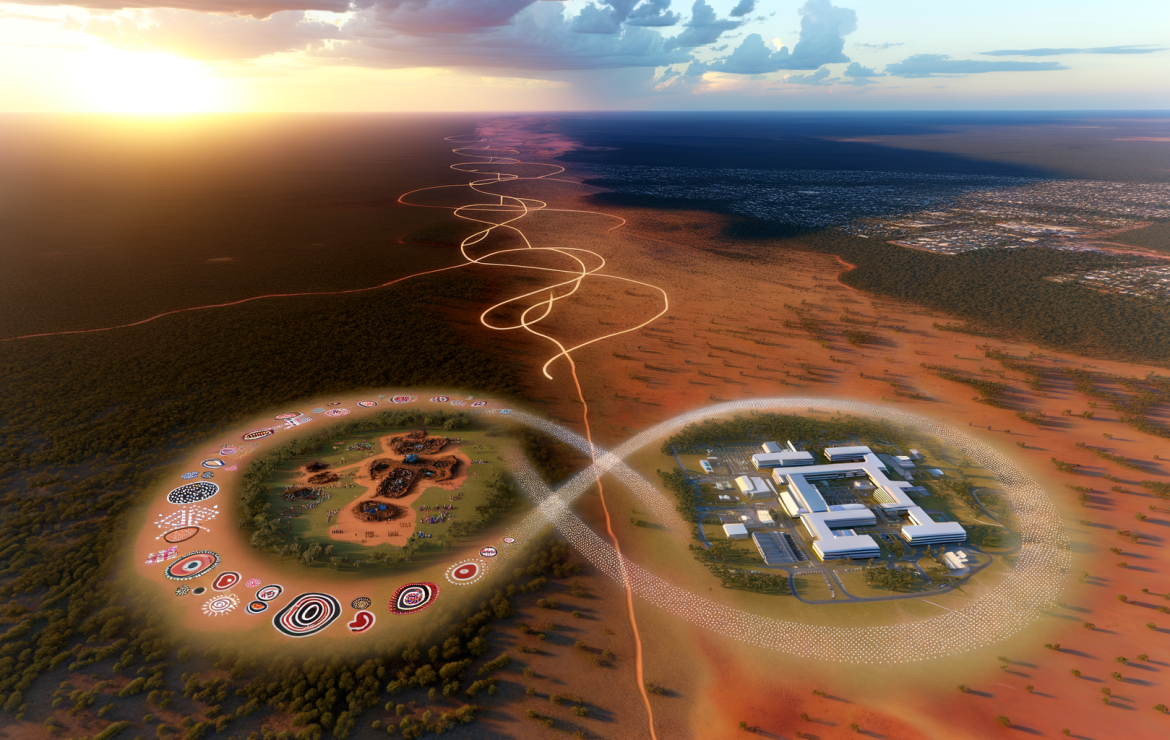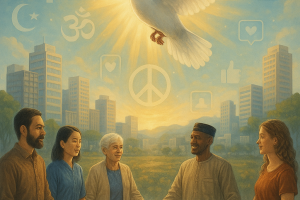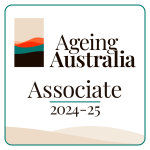National Close the Gap Day: Bridging Australia’s Health Divide

National Close the Gap Day: Uniting Australia for Indigenous Health Equity
In the heart of Australia’s ongoing journey towards reconciliation and equality, National Close the Gap Day stands as a powerful testament to the nation’s collective commitment to addressing historical injustices and creating a more equitable future for Aboriginal and Torres Strait Islander peoples. This annual event, observed on the third Thursday of March, has become a rallying point for Australians from all walks of life to unite in support of health equity for Indigenous communities.
The Power of National Unity in Addressing Health Inequity
The stark reality of health disparities between Indigenous and non-Indigenous Australians has long been a source of national concern. However, the widespread support for National Close the Gap Day demonstrates a profound shift in public consciousness and a growing determination to effect meaningful change. This day serves not only as a reminder of the work that lies ahead but also as a celebration of the progress made and the potential for a future where health outcomes are not determined by ethnicity or cultural background.
Understanding National Close the Gap Day
Historical Development of the Close the Gap Campaign
The Close the Gap campaign emerged from a groundswell of concern about the persistent health inequalities faced by Aboriginal and Torres Strait Islander peoples. In April 2007, the campaign was officially launched by its patrons, Catherine Freeman OAM and Ian Thorpe OAM, both iconic Australian athletes and passionate advocates for Indigenous rights. This launch followed a crucial meeting of the campaign’s steering committee in March 2006, which set the foundation for what would become a national movement.
The campaign gained significant momentum in 2008 when the Australian Government signed the Close the Gap Statement of Intent. This landmark document committed the government to a comprehensive plan aimed at achieving health equality by 2030, marking a pivotal moment in the nation’s approach to Indigenous health policy.
Current Relevance and Importance
Today, the relevance of National Close the Gap Day remains as critical as ever. Despite progress in some areas, Aboriginal and Torres Strait Islander peoples continue to face substantial health inequities. The life expectancy gap of 10-17 years compared to non-Indigenous Australians is a stark reminder of the challenges that persist and the urgent need for continued action.
Key Concepts of National Close the Gap Day
Health Equity for Aboriginal and Torres Strait Islander Peoples
At its core, National Close the Gap Day is about achieving health equity. This concept goes beyond mere equality of access to healthcare services; it encompasses the broader social, economic, and cultural factors that influence health outcomes. The campaign recognizes that true health equity can only be achieved by addressing the complex web of determinants that impact Indigenous health, including education, housing, employment, and cultural recognition.
Community Engagement and Participation
A fundamental principle of the Close the Gap campaign is the importance of community engagement and participation. The day encourages widespread involvement from schools, businesses, community groups, and individuals across Australia. This grassroots approach ensures that the campaign remains grounded in the real experiences and needs of Aboriginal and Torres Strait Islander communities.
Government Accountability
National Close the Gap Day serves as a platform to hold governments accountable for their commitments to Indigenous health. It provides an opportunity for citizens to demand transparency, action, and measurable progress towards closing the health gap. This accountability is crucial in ensuring that policy commitments translate into tangible improvements in health outcomes.
Latest Statistics and Data
Recent data continues to highlight the urgency of the Close the Gap campaign:
- Life Expectancy: Aboriginal and Torres Strait Islander males born between 2015 and 2017 have a life expectancy of 71.6 years, 8.6 years less than non-Indigenous males. For females, the gap is 7.8 years, with Indigenous women having a life expectancy of 75.6 years.
- Infant Mortality: While there has been improvement, the infant mortality rate for Indigenous children is still 2.1 times the rate for non-Indigenous children.
- Progress Towards COAG Health Targets: The latest Closing the Gap report indicates mixed progress. While there have been improvements in areas such as child mortality rates and early childhood education enrollment, other targets, including life expectancy and employment, are not on track.
Expert Opinions and Industry Personalities
The campaign continues to be supported and guided by influential voices in the Indigenous health sector:
Karl Briscoe, Campaign Co-Chair and CEO of the National Association of Aboriginal and Torres Strait Islander Health Workers and Practitioners (NAATSIHWP), emphasizes the critical need for Indigenous representation at the highest levels of government decision-making. In the context of the 2024 Close the Gap Campaign Report, he stated:
“Aboriginal and Torres Strait Islander peoples need representation at the highest levels of government. They need genuine shared agreement making, bipartisanship, unity, and a shared collective vision, driven by Aboriginal and Torres Strait Islander perspectives and knowledges, to address the gaps in Aboriginal and Torres Strait Islander people’s life outcomes.”
The campaign’s patrons continue to lend their voices to the cause:
Catherine Freeman OAM reiterates the importance of sustained effort: “We must continue to push for health equality and ensure that our governments are held accountable for their commitments to Closing the Gap.”
Ian Thorpe OAM broadens the perspective on the campaign’s significance: “The Close the Gap campaign is about more than just health; it’s about recognizing the rights and dignity of Aboriginal and Torres Strait Islander peoples.”
Case Study: Tiwi Islands Regional Council Community Events
The Tiwi Islands Regional Council provides an inspiring example of community-led initiatives in support of National Close the Gap Day. Located off the coast of the Northern Territory, the Tiwi Islands are home to a vibrant Indigenous community that has embraced the campaign with enthusiasm and creativity.
Each year, the council organizes a series of events that blend health education with cultural celebration. These events typically include:
- Health Fairs: Local health services set up stalls to provide information, health checks, and consultations.
- Cultural Workshops: Elders lead sessions on traditional medicine and healing practices, emphasizing the importance of cultural knowledge in maintaining health.
- Sports Tournaments: The community organizes football and basketball tournaments to promote physical activity and community bonding.
- Art Exhibitions: Local artists showcase works that explore themes of health, culture, and identity.
- Community Feasts: The events culminate in shared meals featuring traditional foods, fostering a sense of community and well-being.
These initiatives have had a significant impact:
- Increased engagement with health services among community members
- Greater awareness of health issues affecting Indigenous Australians
- Strengthened intergenerational bonds through shared cultural activities
- Improved dialogue between the community and health service providers
The success of the Tiwi Islands events demonstrates the power of community-led approaches in addressing health inequities. By integrating health promotion with cultural celebration, the council has created a model that resonates deeply with community members and effectively advances the goals of the Close the Gap campaign.
Current Trends and Future Projections
Increased Focus on Self-Determination
A significant trend in recent years has been the growing emphasis on self-determination in Indigenous health policy and practice. This shift recognizes that sustainable improvements in health outcomes can only be achieved when Aboriginal and Torres Strait Islander peoples have control over their own health services and decision-making processes.
The 2024 Close the Gap Campaign Report, titled “Voyage to Voice, Treaty, Truth and Beyond,” underscores this trend. It highlights the importance of Indigenous-led solutions and the need for genuine partnership between Indigenous communities and government bodies.
Integration with Broader Social Justice Initiatives
The Close the Gap campaign is increasingly aligning with broader social justice movements, particularly the push for constitutional recognition and a treaty as outlined in the Uluru Statement from the Heart. This integration reflects a growing understanding that health equity cannot be achieved in isolation from other social, political, and economic reforms.
Impact Analysis
Healthcare System Reform
National Close the Gap Day has been a catalyst for significant reforms within Australia’s healthcare system. These include:
- Cultural Competency Training: Increased focus on cultural awareness and safety training for healthcare providers.
- Indigenous Health Workforce: Initiatives to recruit and retain more Aboriginal and Torres Strait Islander health professionals.
- Targeted Health Programs: Development of specific health interventions tailored to the needs of Indigenous communities.
Community Awareness and Education
The campaign has dramatically raised public awareness about Indigenous health issues:
- Media Coverage: Increased media attention on Indigenous health disparities and success stories.
- Educational Resources: Development of curriculum materials for schools to teach about Indigenous health and culture.
- Corporate Engagement: Growing participation from businesses in supporting Indigenous health initiatives.
Comparison with Similar Initiatives
| Initiative | Focus | Scope | Impact |
|---|---|---|---|
| Close the Gap | Health equity for Aboriginal and Torres Strait Islander peoples | National, community-based | Advocacy, policy change, community engagement |
| Reconciliation Australia | Reconciliation and social justice | National, organizational | Education, workplace programs, community events |
| Australian Indigenous HealthInfoNet | Health information and resources for Indigenous health | National, online platform | Information dissemination, research support |
While each initiative plays a crucial role, National Close the Gap Day stands out for its specific focus on health equity and its ability to mobilize widespread community participation across Australia.
Controversies and Debates
Government Accountability in Meeting Health Targets
A persistent point of debate is the government’s progress in meeting the health targets set for Aboriginal and Torres Strait Islander peoples. Critics argue that despite the commitments made, action has been insufficient to achieve the desired outcomes by 2030. This has led to calls for more rigorous monitoring and reporting mechanisms.
Funding and Resource Allocation
The allocation of funds and resources to support Indigenous health initiatives remains a contentious issue. Debates center around:
- The adequacy of current funding levels
- The effectiveness of funding distribution
- The balance between mainstream and Indigenous-specific health services
These debates underscore the complex challenges involved in addressing health inequities and the need for ongoing dialogue and adjustment of strategies.
How To: Organizing a Successful National Close the Gap Day Event
Organizing an event for National Close the Gap Day is an excellent way to raise awareness and contribute to the campaign’s goals. Here’s a step-by-step guide to help you plan a successful event:
-
Choose a Unique Event Theme
- Consider an Indigenous art showcase focusing on health and well-being themes.
- Plan a health fair featuring both traditional and modern approaches to health.
-
Partner with Local Indigenous Organizations
- Reach out to local Aboriginal and Torres Strait Islander health services or community groups.
- Invite Indigenous elders or community leaders to guide the event planning.
-
Incorporate Traditional Indigenous Practices
- Begin with a Welcome to Country ceremony performed by a local Indigenous elder.
- Include traditional healing demonstrations or talks by Indigenous health practitioners.
-
Create Interactive Educational Activities
- Develop a health trivia game focusing on Indigenous health facts and history.
- Organize cultural workshops, such as traditional dance or art classes, that promote well-being.
-
Invite Indigenous Health Professionals as Guest Speakers
- Arrange for talks by Indigenous doctors, nurses, or health researchers.
- Include personal stories from community members about their health journeys.
-
Promote Health Screenings and Information
- Set up booths for basic health checks like blood pressure or diabetes screening.
- Distribute information on Indigenous-specific health programs and services.
-
Engage Local Media
- Invite local media to cover the event and spread awareness.
- Prepare press releases highlighting the significance of Close the Gap Day.
-
Facilitate Fundraising Opportunities
- Organize a charity run or walk to raise funds for Indigenous health initiatives.
- Set up a stall selling Indigenous artwork or crafts, with proceeds going to health programs.
-
Create a Social Media Campaign
- Use hashtags like #CloseTheGap and #IndigenousHealth to increase visibility.
- Encourage attendees to share their experiences and learnings on social media.
-
Follow-Up and Reflection
- Gather feedback from participants and organizers.
- Share outcomes and lessons learned with the broader Close the Gap campaign.
Remember, the key to a successful event is ensuring it is respectful, inclusive, and meaningful to the local Indigenous community. Always prioritize Indigenous voices and perspectives in your planning and execution.
FAQ Section
Q1: What is the significance of holding National Close the Gap Day annually?
A: National Close the Gap Day serves as an annual reminder of the ongoing health inequities faced by Aboriginal and Torres Strait Islander peoples. It provides a focused opportunity for communities across Australia to come together, raise awareness, and take action towards achieving health equality. The annual nature of the event helps maintain momentum, measure progress, and renew commitments to closing the health gap.
Q2: How does the Close the Gap campaign address social determinants of health?
A: The Close the Gap campaign recognizes that health outcomes are influenced by a wide range of social factors. It advocates for a holistic approach that includes:
- Improving access to education and employment opportunities
- Addressing housing and environmental health issues
- Promoting cultural safety and respect in healthcare settings
- Supporting community-controlled health organizations
- Advocating for policies that address systemic racism and discrimination
Q3: What role do non-Indigenous Australians play in supporting the campaign?
A: Non-Indigenous Australians play a crucial role in supporting the Close the Gap campaign by:
- Educating themselves about Indigenous health issues and history
- Participating in and organizing National Close the Gap Day events
- Advocating for policy changes and increased funding for Indigenous health initiatives
- Supporting Indigenous-led organizations and businesses
- Challenging racism and promoting cultural respect in their communities and workplaces
Q4: How does the campaign collaborate with Indigenous-led health organizations?
A: The Close the Gap campaign works closely with Indigenous-led health organizations in several ways:
- Consulting with Aboriginal Community Controlled Health Organizations (ACCHOs) to inform campaign priorities
- Amplifying the voices and expertise of Indigenous health professionals and leaders
- Supporting the capacity building of Indigenous-led health services
- Advocating for increased funding and support for Indigenous-led health initiatives
Q5: What impact has the COVID-19 pandemic had on the Close the Gap campaign?
A: The COVID-19 pandemic has had significant implications for the Close the Gap campaign:
- It highlighted the resilience and effectiveness of Indigenous-led health responses
- The pandemic exacerbated existing health inequities, underscoring the urgency of the campaign’s goals
- It led to increased focus on digital health solutions and telehealth services for remote communities
- The campaign adapted to virtual events and online advocacy during lockdowns
- There’s been renewed emphasis on addressing underlying health conditions that increase vulnerability to infectious diseases
Challenges and Solutions
Challenge 1: Sustaining Long-Term Commitment to Health Equity Goals
Solution: Implement regular progress reviews and adjust strategies accordingly
- Establish an independent monitoring body to track progress towards health equity goals
- Conduct annual community consultations to ensure strategies remain relevant and effective
- Develop long-term funding agreements tied to measurable outcomes
- Create public dashboards to transparently communicate progress and challenges
Challenge 2: Addressing Cultural Barriers in Healthcare
Solution: Promote cultural competency training for healthcare providers
- Develop comprehensive cultural safety training programs for all healthcare workers
- Increase recruitment and retention of Aboriginal and Torres Strait Islander health professionals
- Implement cultural mentoring programs in healthcare settings
- Create culturally safe spaces within healthcare facilities
Ethical Considerations and Best Practices
Respecting Indigenous Self-Determination in Health Policy-Making
- Ensure Indigenous representation in all levels of health policy development
- Prioritize community-controlled health services in funding and resource allocation
- Recognize and incorporate traditional healing practices into mainstream healthcare
Ensuring Culturally Appropriate Healthcare Services
- Develop health resources and communication materials in Indigenous languages
- Design healthcare facilities that reflect Indigenous cultural values and practices
- Implement flexible service delivery models that accommodate cultural obligations and practices
Balancing Data Collection with Privacy Concerns
- Establish clear protocols for the collection and use of Indigenous health data
- Ensure Indigenous ownership and control over health-related data
- Develop ethical frameworks for research involving Indigenous communities
Success Stories and Testimonials
Community-Led Health Initiatives in Remote Areas
The Utopia community in the Northern Territory has implemented a successful community-controlled health program that has significantly improved health outcomes. Key achievements include:
- 50% lower mortality rates compared to the NT average for Indigenous communities
- Successful management of chronic diseases through regular health checks and culturally appropriate care
- Increased engagement with preventive health measures
Testimonial from an Indigenous Healthcare Worker
Sarah, an Aboriginal nurse practitioner from Western Australia, shares:
“The Close the Gap campaign has been instrumental in improving access to healthcare in our community. We’ve seen a real shift in how services are delivered, with a much stronger focus on cultural safety and community involvement. It’s not just about treating illness anymore; it’s about building a healthier community from the ground up. We still have a long way to go, but I’m seeing positive changes every day in my work.”
Tools, Equipment, and Resources
Close the Gap Campaign Educational Materials and Toolkits
The campaign provides a range of resources to support community engagement:
- Fact sheets on Indigenous health issues
- Event planning guides for National Close the Gap Day
- Poster and flyer templates for local events
- Educational videos highlighting Indigenous health success stories
Social Media Toolkit for Promoting Events and Sharing Stories
A comprehensive social media kit is available, including:
- Suggested posts and hashtags for various platforms
- Shareable infographics on key health statistics
- Guidelines for respectful social media engagement on Indigenous issues
- Templates for creating event pages and online fundraisers
Conclusion
National Close the Gap Day stands as a powerful testament to Australia’s commitment to achieving health equity for Aboriginal and Torres Strait Islander peoples. It is a day that not only highlights the persistent health disparities but also celebrates the resilience, strength, and cultural richness of Indigenous communities across the nation.
The campaign’s success in mobilizing widespread community support demonstrates the power of collective action in addressing complex social issues. From grassroots community events to high-level policy advocacy, Close the Gap has become a catalyst for meaningful change in Australia’s approach to Indigenous health.
However, the journey towards health equality is far from over. The persistent life expectancy gap and ongoing health challenges faced by Indigenous Australians underscore the need for continued effort, innovation, and commitment from all sectors of society.
As we look to the future, the emphasis on self-determination, community-led solutions, and cultural respect provides a roadmap for sustainable progress. The integration of the Close the Gap campaign with broader social justice initiatives, such as the push for constitutional recognition and a treaty, reflects a growing understanding of the interconnected nature of health, culture, and social equity.
National Close the Gap Day serves as an annual reminder of our collective responsibility to create a more equitable Australia. It challenges us to move beyond awareness to action, to translate goodwill into tangible outcomes, and to work in genuine partnership with Aboriginal and Torres Strait Islander peoples.
The path to closing the health gap may be long and complex, but the widespread support for this campaign shows that Australians are ready and willing to walk this path together. As we continue to strive for health equity, let us carry forward the spirit of National Close the Gap Day throughout the year, working tirelessly to create a future where all Australians have the opportunity to lead healthy, fulfilling lives.
Call to Action
As we conclude, let us remember that closing the health gap is not just a one-day event but a ongoing commitment. Here’s how you can continue to support this vital cause:
- Stay Informed: Educate yourself about Indigenous health issues and the social determinants that impact them.
- Advocate: Use your voice to support policies and initiatives that promote Indigenous health equity.
- Participate: Get involved in local Close the Gap events or organize your own throughout the year.
- Support Indigenous-Led Organizations: Donate to or volunteer with Aboriginal Community Controlled Health Organizations.
- Promote Cultural Safety: Encourage cultural competency in your workplace and community.
- Share Stories: Use social media to amplify Indigenous voices and success stories in health.
- Reflect and Act: Regularly assess your own biases and take action to promote inclusivity and respect in your daily life.
Together, we can make health equity a reality for all Australians. Let’s close the gap, not just today, but every day.
Additional Resources
For those seeking to deepen their understanding and involvement in the Close the Gap campaign, here are some valuable resources:
- Close the Gap Official Website: The primary source for campaign information, resources, and ways to get involved.
- Australian Indigenous HealthInfoNet: A comprehensive online resource for information on Aboriginal and Torres Strait Islander health.
- National Aboriginal Community Controlled Health Organisation (NACCHO): The national peak body representing Aboriginal Community Controlled Health Services.
- Australian Institute of Health and Welfare – Indigenous Health: Official statistics and reports on Indigenous health outcomes.
- Reconciliation Australia: Information on broader reconciliation efforts and how they intersect with health equity.
- Lowitja Institute: Australia’s national institute for Aboriginal and Torres Strait Islander health research.
- Indigenous Allied Health Australia (IAHA): The national body representing Aboriginal and Torres Strait Islander allied health professionals and students.
These resources provide a wealth of information, from the latest research and statistics to practical guides for action and engagement. They are invaluable tools for anyone committed to supporting the journey towards health equity for Aboriginal and Torres Strait Islander peoples.
Overview and Current Significance
National Close the Gap Day, observed on the third Thursday of March, is a pivotal event in Australia that advocates for health equity for Aboriginal and Torres Strait Islander peoples. The campaign, which began in 2007, aims to close the significant health and life expectancy gap between Indigenous and non-Indigenous Australians within a generation.
Current Significance
- The campaign is crucial as it highlights the persistent health inequities faced by Aboriginal and Torres Strait Islander peoples, who have a life expectancy 10-17 years lower than non-Indigenous Australians.
- It encourages widespread participation from schools, businesses, and community groups to demand health equality and hold governments accountable for their commitments.
Latest Statistics and Data
As of the latest reports, here are some key statistics:
- Life Expectancy: Aboriginal and Torres Strait Islander peoples have a life expectancy significantly lower than non-Indigenous Australians.
- Infant Mortality: Babies born to Indigenous mothers die at a rate twice as high as those born to non-Indigenous mothers.
- Health Targets: Despite targets set by the Council of Australian Governments (COAG) in 2007, Australia has not yet achieved the desired improvements in health outcomes for Aboriginal and Torres Strait Islander peoples.
Recent Expert Opinions
Karl Briscoe, Campaign Co-Chair and CEO of the National Association of Aboriginal and Torres Strait Islander Health Workers and Practitioners, emphasized the need for representation at the highest levels of government and genuine shared agreement-making to address the health gaps. This was stated in the context of the 2024 Close the Gap Campaign Report.
New Case Study/Example
Community Events
The campaign encourages various community activities such as workplace morning teas, sports days, school events, and public events in hospitals and offices. For example, the Tiwi Islands Regional Council organizes events to raise awareness and support the Close the Gap campaign.
Brief Historical Context and Latest Developments
- Launch: The Close the Gap Campaign was launched in April 2007 by patrons Catherine Freeman OAM and Ian Thorpe OAM, following a meeting of the campaign’s steering committee in March 2006.
- Government Commitment: In 2008, the Australian Government signed the Close the Gap Statement of Intent, committing to a comprehensive plan to achieve health equality by 2030.
- Recent Reports: The 2024 Close the Gap Campaign Report, titled “Voyage to Voice, Treaty, Truth and Beyond,” highlights the progress and challenges in achieving health equity and emphasizes the importance of self-determination and community leadership.
Emerging Trends and Immediate Future Outlook
Increased Focus on Self-Determination
There is a growing emphasis on the importance of Aboriginal and Torres Strait Islander peoples having control over their own health services and policies.
Integration with Broader Social Justice Initiatives
The campaign is increasingly aligned with broader social justice initiatives, such as the Uluru Statement from the Heart, which seeks constitutional reform and a treaty.
Current Controversies or Debates
Government Accountability
A significant debate revolves around the government’s accountability in meeting the health targets set for Aboriginal and Torres Strait Islander peoples. Critics argue that current efforts are insufficient to achieve the desired outcomes by 2030.
Funding and Resource Allocation
There is ongoing discussion about the adequate allocation of funds and resources to support the health needs of Indigenous communities.
Immediate Societal/Industry Impact
Healthcare System Reform
The campaign pushes for a more responsive healthcare system that is sensitive to cultural and linguistic differences, which can lead to systemic reforms in healthcare delivery.
Community Engagement
The event fosters widespread community engagement, educating the public about the health issues faced by Aboriginal and Torres Strait Islander peoples and promoting collective action.
Comparison to 3 Current Alternatives
| Initiative | Focus | Scope | Impact |
|---|---|---|---|
| Close the Gap | Health equity for Aboriginal and Torres Strait Islander peoples | National, community-based | Advocacy, policy change, community engagement |
| Reconciliation Australia | Reconciliation and social justice | National, organizational | Education, workplace programs, community events |
| Australian Indigenous HealthInfoNet | Health information and resources for Indigenous health | National, online platform | Information dissemination, research support |
Recent FAQs with Cited, Up-to-Date Answers
When was the first National Close the Gap Day?
The first National Close the Gap Day was initiated in 2007.
What is the Close the Gap policy?
The policy aims to reduce disadvantage among Aboriginal and Torres Strait Islander people in terms of life expectancy, access to education, and employment opportunities.
Who introduced Close the Gap?
The Close the Gap Campaign Committee first assembled in March 2006, with patrons Ian Thorpe and Catherine Freeman launching the campaign in April 2007.
How can I get involved in National Close the Gap Day?
You can host an activity in your workplace, home, community, or school, and register your event on the Close the Gap website.
What are the key objectives of the Close the Gap Campaign?
The campaign aims to achieve health equality within a generation and halve the mortality rate gap for children under five years old within a decade.
Latest Step-by-Step Guide or Variations
How to Organize a National Close the Gap Day Activity
-
Register Your ActivityUse the Close the Gap website to register your event.
-
Invite ParticipantsInvite friends, workmates, and family to join.
-
Take ActionSign the Close the Gap pledge and ask others to do the same.
-
Engage with Your MPContact your local Member of Parliament to express support.
-
Share Stories and PhotosShare on social media using the hashtag #ClosetheGap.
Key Takeaways from Recent Developments
- Self-Determination: The importance of Aboriginal and Torres Strait Islander peoples having control over their health services is increasingly recognized.
- Community Participation: Widespread community participation is crucial for demanding health equality and holding governments accountable.
Recent Notable Quotes
Karl Briscoe, 2024: “Aboriginal and Torres Strait Islander peoples need representation at the highest levels of government. They need genuine shared agreement making, bipartisanship, unity, and a shared collective vision, driven by Aboriginal and Torres Strait Islander perspectives and knowledges, to address the gaps in Aboriginal and Torres Strait Islander people’s life outcomes.”
Catherine Freeman OAM, 2022: “We must continue to push for health equality and ensure that our governments are held accountable for their commitments to Closing the Gap.”
Ian Thorpe OAM, 2022: “The Close the Gap campaign is about more than just health; it’s about recognizing the rights and dignity of Aboriginal and Torres Strait Islander peoples.”
Links to the Most Current Articles/Resources
- Close the Gap Day 2025
- Close the Gap: Indigenous Health Campaign
- National Close the Gap Campaign Report 2024
Newest Relevant Tools/Equipment
- Educational Resources: The Close the Gap campaign provides various educational materials and toolkits for schools and community groups to organize events and raise awareness.
- Social Media Toolkit: A toolkit for using social media to promote the campaign and share stories using the hashtag #ClosetheGap.
Current Challenges and Proposed Solutions
Challenges
- Government Commitment: Ensuring that governments remain committed to the health targets and allocate sufficient resources.
- Community Engagement: Maintaining and increasing community participation and engagement.
Proposed Solutions
- Increased Advocacy: Continued advocacy and pressure on governments to meet their commitments.
- Community-Led Initiatives: Supporting community-led health initiatives and ensuring that Aboriginal and Torres Strait Islander peoples have control over their health services.
Recent Success Story/Testimonial
Community Events: The success of community events, such as those organized by the Tiwi Islands Regional Council, in raising awareness and promoting health equity has been notable. These events demonstrate the impact of collective community action.
Latest Ethical Considerations
- Cultural Sensitivity: Ensuring that health services are culturally sensitive and responsive to the needs of Aboriginal and Torres Strait Islander peoples.
- Self-Determination: Respecting and supporting the self-determination of Aboriginal and Torres Strait Islander peoples in their health care, which is a fundamental human right.








